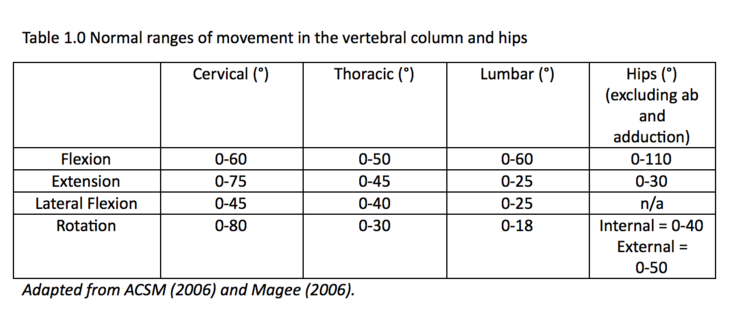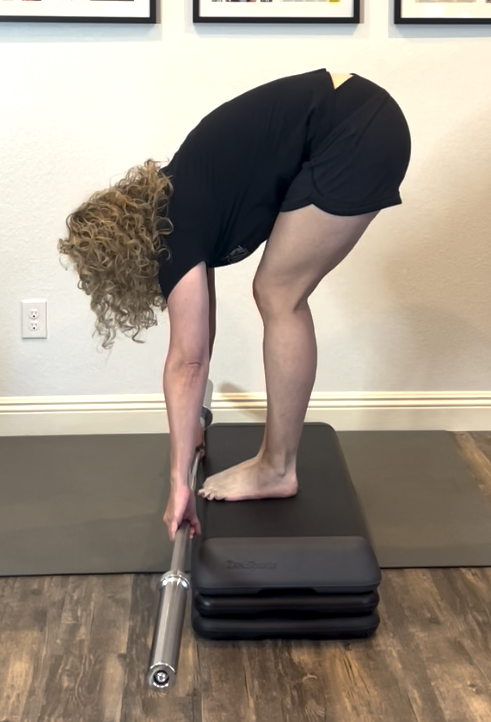How Much Does Your Spine REALLY Need to Bend?
2022-03-1
Jessica Bento, Physical Therapist (Creator DVRT Restoration, DVRT Rx Shoulder, Knees, Pelvic Control, & Gait Courses)

It seems like the pendulum tends to swing back and forth and back and forth when it comes to what works and what doesn’t for the spine especially if you are getting your information from the good old social media platforms, but in actuality there really should not be too much of a debate regarding how much our spine needs to move or should move.
We actually have known this for quite some time, the ranges of motion each individual spinal segment has available to it and this will differ depending upon what area we are referencing. How much spinal mobility that is needed for everyday actives such as walking or bending down to pick something up off the floor. We know this.
For some reason this seems to be a hot topic nowadays and the pendulum has swung in a new direction and one I can’t get on board with. I see people going to extremes when it comes to spinal mobility and often times leaning towards being harmful, so I thought it would be good to address some of things that I see so often.
Lets start off by addressing what is spinal mobility. Basically it is the available movement of a specific spinal segment. Which we can actually measure this and below I have the normal ranges of motion for the spine.

Now obviously this can vary from person to person but for all intents and purposes this we can assume this is the majority of healthy individuals mobility for their spine.
So what is it that I see when I say I have been seeing extremes? Well, for some reason spinal mobility (spinal flexion exercises to be exact) exercises have become rather popular and I am not talking about yoga posses. I am taking about weighed/under load exercises for spinal flexion and often times rotation as well. But for now lets just look at the whole spinal flexion thing going on lately.

So you might be thinking, “ the spine is meant to move and bend and twist, so what’s the big deal?” Well, yes our spine is meant to move but rarely is the issue that we need more spinal mobility when are talking the low back. Often times people are doing these said exercise for improve spinal health and really not understanding that good spine health rarely involves trying to get more flexibility out of the spine especially when we are taking about the lumbar spine or the lower back.
In fact, research points to the fact that people with low back pain often have too much movement of spinal segments and that this can be a potential factor in their low back pain. “Persons with non-specific low back pain have a tendency to demonstrate single level lumbar segmental hypermobility when compared to age specific asymptomatic subjects.” (Segmental lumbar mobility in individuals with low back pain: in vivo assessment during manual and self-imposed motion using dynamic MRI)
Again below as this is just not one article or me saying this.
“Many therapy approaches have the objectives of strengthening muscle and increasing spine range of motion. This is problematic (Parks et al, 2003) since those who have more motion in their backs have a greater risk of having future back troubles.” (Designing Back Exercise: from Rehabilitation to Enhancing Performance)
So when we load an individual and have them go through lets say spinal flexion and lets say their legs are locked out so all the movement is occurring from the spine, what is it that we are really doing other than and exercises the client doesn’t need or and exercise the person could potential get harmed in doing so?
Now you are probably saying how could someone get injured in doing this? Well…
“Loading in flexion of the spine is linked to the development of disc hernia (Wade et al. 2014) possibly through endplate failure (Wade et al. 2015). Strong evidence indicates that a combination of repetitive flexion and extension increase the risk of injury of the disc” (Balkovec & McGill 2012; Callaghan & McGill 2001)
View this post on Instagram
Hip mobility on the other hand can have a very positive impact on low back issues
So you might be asking what can we do, or what might be better? Well, from what the research tells us we should be more focused on improved motor control, hip mobility, core stability and strength of the glutes.
“For example, people with troubled backs use their backs more. Generally, they walk, sit, stand and lift using mechanics that increase back loads. Many of them have stronger backs but are less endurable than matched asymptomatic controls (McGill et al, 2003). They tend to have more motion in their backs and less motion and load in their hips.”
What should we focus on instead? Better hip mobility, greater core stability, and performing movement patterns at a very high level have been shown to be far more effective strategies. These ideas along with lifestyle considerations should be at the forefront of our efforts to help those with low back pain, but need to be progressive and start with where people can work relatively pain free. Stability drills like those that I show below can go a long ways in helping!
This week only, get any of our great DVRT Online Certifications, Courses, and/or Workout programs and get a second HALF OFF! Just use code “bogo” HERE
View this post on Instagram
© 2025 Ultimate Sandbag Training. Site by Jennifer Web Design.







